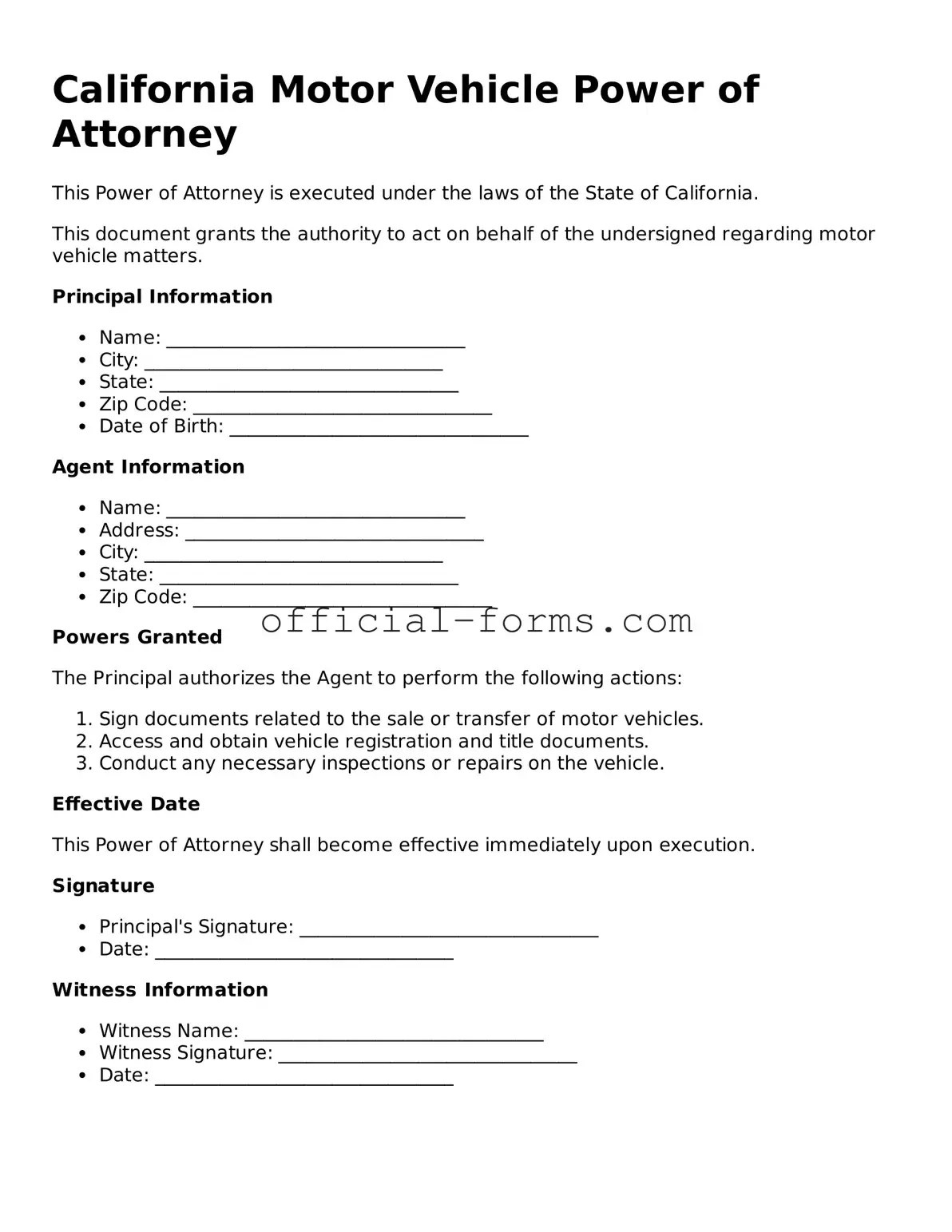Filling out the California Motor Vehicle Power of Attorney form can be straightforward, but many people make common mistakes that can lead to delays or complications. One frequent error is not providing the correct vehicle information. Ensure that the vehicle’s make, model, year, and VIN are accurately listed. Missing or incorrect details can invalidate the document.
Another common mistake is neglecting to sign the form. Both the principal and the agent must sign to make the power of attorney valid. A missing signature can render the entire form useless, causing unnecessary setbacks.
Some individuals forget to date the form. A date is essential as it indicates when the power of attorney becomes effective. Without a date, there may be confusion about the timing of the authority granted.
Inadequate identification of the agent is another issue. The agent must be clearly identified by name and address. Failing to provide complete information can lead to questions about the agent's authority.
People often overlook the need for a witness or notarization. While not always required, having the document notarized or witnessed can add an extra layer of legitimacy, especially if the document is challenged later.
Some individuals mistakenly believe they can grant unlimited powers. The form should specify the powers being granted. Vague language can lead to misunderstandings about what the agent is authorized to do.
Another mistake is using outdated forms. Always ensure you are using the most current version of the California Motor Vehicle Power of Attorney form. Laws and requirements can change, and using an outdated form can cause issues.
People sometimes fail to keep copies of the completed form. It’s important to retain a copy for personal records. This can be useful if any disputes arise or if the form needs to be referenced in the future.
Additionally, some individuals do not communicate with their agent about the powers granted. Clear communication is crucial to ensure that the agent understands their responsibilities and the principal’s expectations.
Finally, forgetting to review the form for errors before submission can lead to complications. Taking a moment to double-check all information can save time and prevent potential legal issues down the line.
